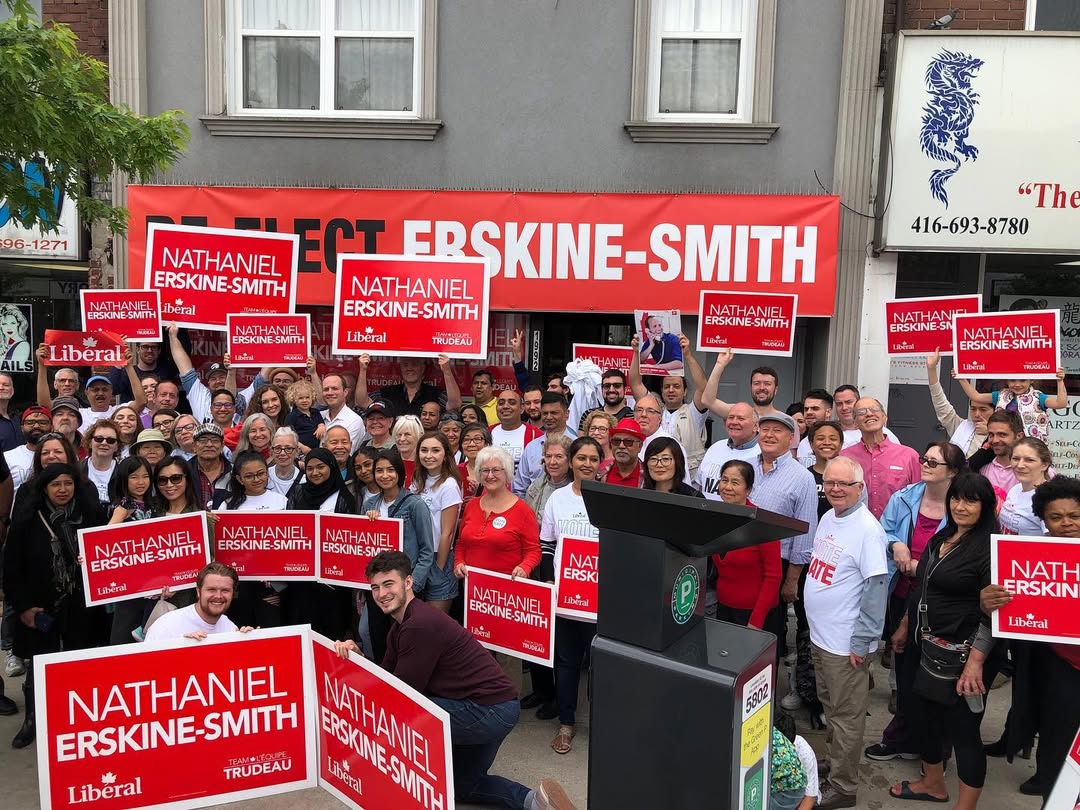Every day has felt like a week, and we’ve made the most of these last three months.
With an election on the horizon, we made the most of our last week.
For example, I laid out my thoughts on all things housing in a comprehensive speech at the Economic Club of Canada. You can read the full text of that speech below.
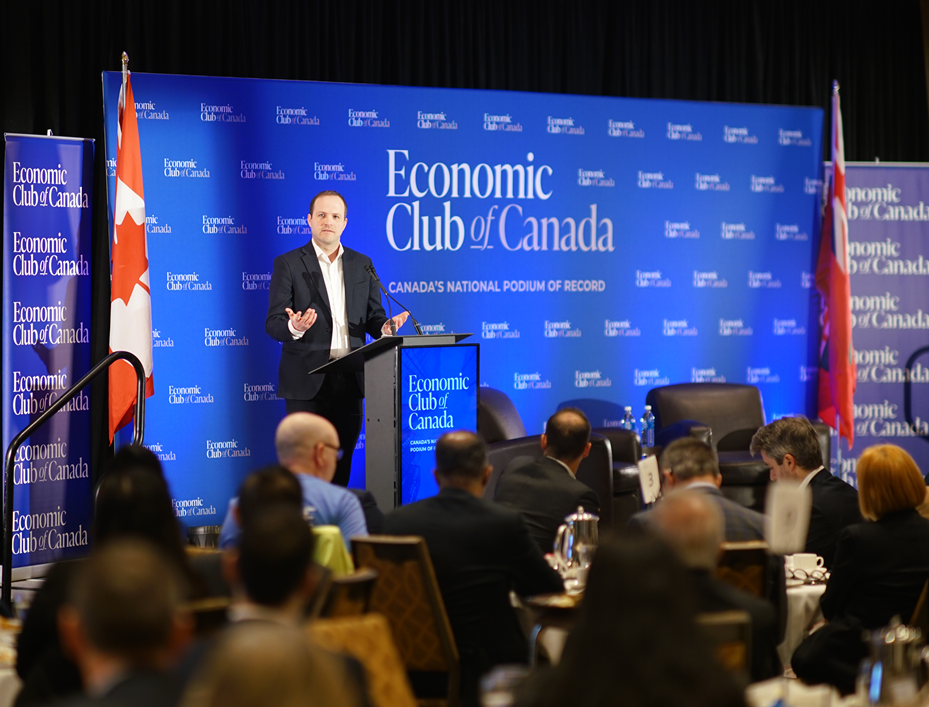
We launched Toronto Builds alongside Mayor Chow. It’s $2.55 billion in low-cost financing for 5,000 new rental units, with more than 20% set to be below market. It builds on our waterfront deal, support to address encampments, and funding for the TTC.
Speaking of transit, we announced federal support for two major priority transit projects across Canada, including BC Translink and the Brampton LRT extension.
On the housing front, we got the first few co-op projects over the finish line, released the new Housing Catalogue, and landed Canada Housing Infrastructure Fund deals with British Columbia and a number of municipalities, including Mississauga, Sault Ste. Marie, and Sudbury. We are funding housing enabling infrastructure and incentivizing development charge reductions and reforms at the same time.
We’re also supporting the North, as we approved major new housing enabling infrastructure projects in Yellowknife, Whitehorse, and Iqaluit.
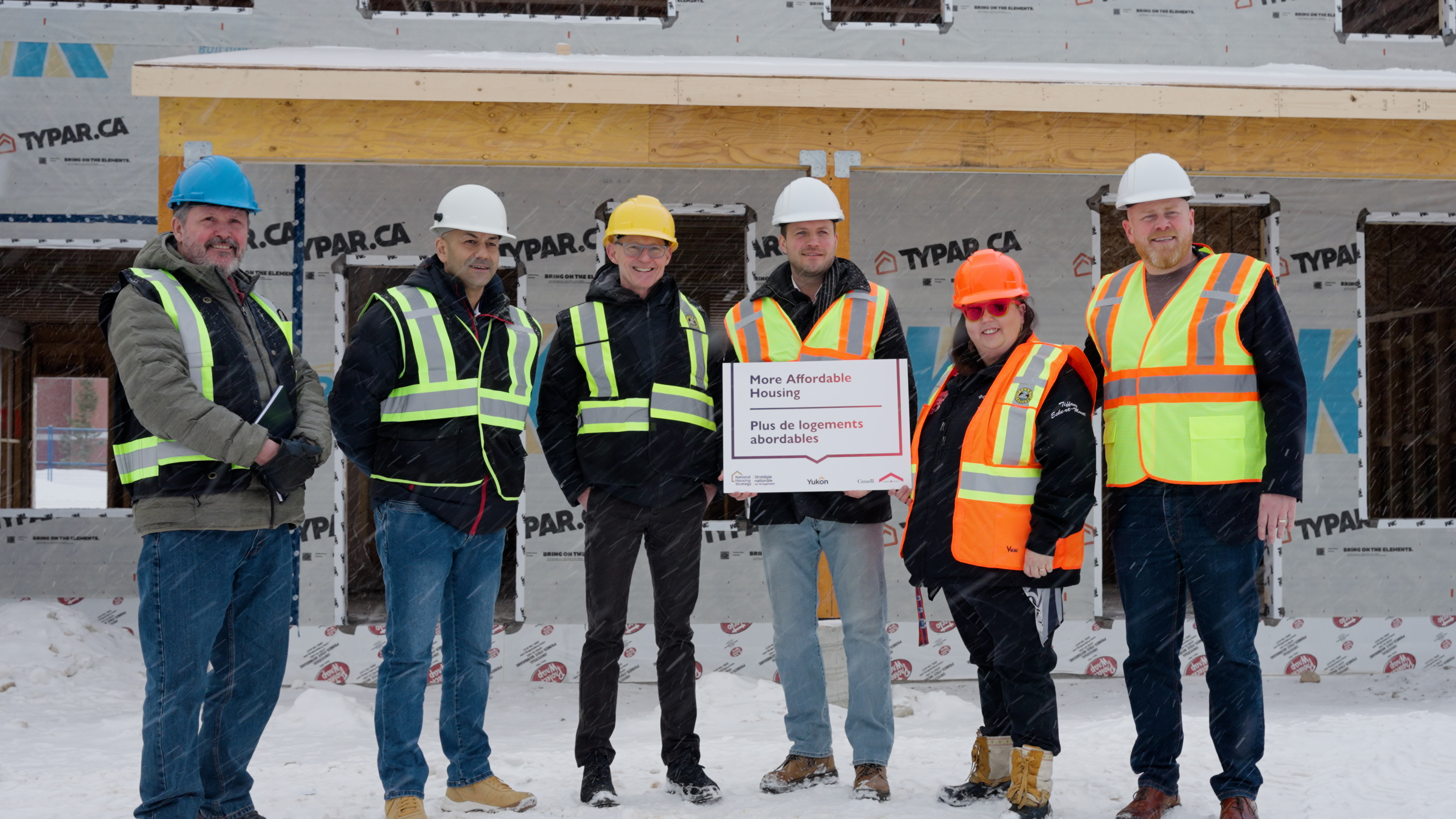
Lastly, I finalized a number of announcements through the Green and Inclusive Communities Building fund. There are great projects across the country, but I was especially happy to approve $20 million for the expansion of Science North, which I have fond memories of visiting as a kid, with a tarantula crawling all over my hand. We need to defend and expand science learning for our kids.
As busy as I was, the new Prime Minister was even busier.
After meeting allies in Europe, Prime Minister Carney met with Premiers to unlock internal free trade, announced an initial housing measure, and committed to a series of measures to strengthen our Arctic sovereignty. He also enjoyed St. Patrick’s Day.

No question, there’s real momentum heading into the election. Increasingly, Canadians understand that we need serious leadership in this moment, and a government focused on building up our country and economy in a thoughtful way.
My team and I have worked hard to make the most of these last three months. We’ve gotten a lot done. I expect to see many new and even more ambition housing commitments in the weeks ahead. And I hope we have the opportunity to come back and make an even bigger difference.
SPEECH TO THE ECONOMIC CLUB OF CANADA ON MARCH 18, 2025
First, a thank you to everyone for being here. But a special thanks in particular to my team. For putting this together, but also for doing as much as they’ve done these last three months.
When I took on this role, I expected it to be a short runway and said as much during the December swearing in. We’ve worked hard to make the most of it. And I now stand before you with a measure of experience. A cabinet minister for less than three months, but I’ve already served under two Prime Ministers.
Jokes aside, Paul my deputy is here, and he and the civil service have been a huge help. Coleen and the team at CMHC have worked overtime too and put up with my constant prodding. And my political staff, some new and some with me since 2015; none of this happens without them.
Apart from responding to President Trump’s threats and tariffs, I see delivering housing and infrastructure as the most important job we’ve got. It is time to build.
We need to ensure population growth and housing supply go hand in hand. We’ve got a huge amount of work ahead to double housing starts across this country.
But I want to start with a more basic story, and a question of opportunity.
Imagine two young people at university, let’s say that they meet in teacher’s college. They graduate, find different teaching gigs, get together. After a stint living together with friends, they move out on their own into a co-op.
5 years of living in that co-op and three kids later, they need more space.
With savings and some family support, they buy their first home. A modest three bedroom, semi-detached home that’s more than 60 years old. The price of that home is 4-5 times one teacher’s salary, while the other teacher stays home to raise the three kids for a few years.
Those three kids grow up wanting for little. A middle class life in Toronto, in Canada. They take transit to school, enjoy the summers with family road trips, camping, and sports, and they save up for a post-secondary education of their own, with a mix of help from their teacher parents as well as student loans.
The family is, in many ways, set up for success.
It’s one of many middle class stories in this country that many Canadians might recognize and identify with, and there is a basic equality of opportunity built into it.
But it might as well be a fairy tale today. Where it once took an average of five years to save up for a 20% down payment on a starter home, that number is up to 17 years across Canada and 27 years if you live in the GTA.
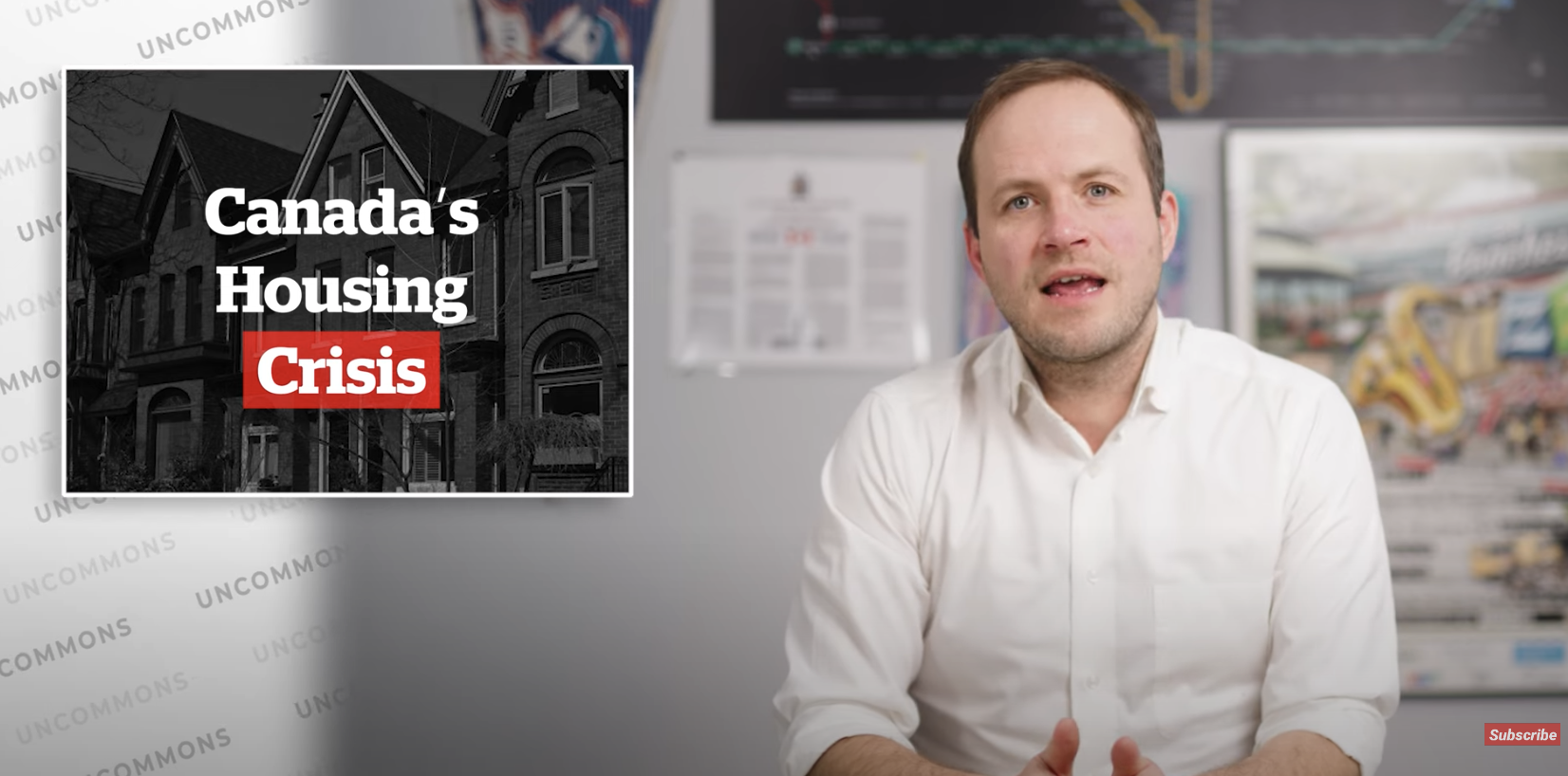
The housing crisis is a challenge to any sense of generational fairness.
It’s also a real challenge to our country’s productivity. Young and talented people won’t stay to work and contribute here if they can’t afford to live here.
Market housing is too expensive and non-market housing is too scarce.
Canada saw 230,000 housing starts in 2024. We need to double that.
The overall share of our social housing stock is less than 4%. We need to double that.
It sounds hard. And it is. But if we don’t collectively act with the requisite ambition, across orders of government and industries, the housing crisis will only get worse.
As a federal government, we’ve come a long way since 2015.
The National Housing Strategy was an important step to re-assert the federal role in housing. We saw additional action post-pandemic, including through the Housing Accelerator Fund. As of last year, my predecessor Sean Fraser helped oversee the most comprehensive plan yet.
And Marc Miller took action to reduce our immigration levels, including to significantly reduce temporary immigration that had become unsustainable. On the government’s estimates, the new levels plan will reduce the housing supply gap by about 670,000 units by the end of 2027.
Even with these cuts in place, we could see our population grow to 45 million by 2035. The reduced levels will help to stabilize demand, but we still need to build more homes to accommodate that growth.
More, we’ve seen housing affordability run away on us over the last two decades – home prices and rents running away from incomes – and it’s been even more acute since the pandemic.
We don’t just need more homes to match the growth to come, we also need to catch up to the growth we’ve already seen.
Again, housing starts need to double, with massive increases especially needed in Ontario, BC, Nova Scotia, Montreal, and Alberta outside of Edmonton, and more.
So I’m not here to tell you that it’s mission accomplished, but to reiterate that there’s much more for us to do: to help drive down the costs of home building, to re-invest in community housing, and to treat housing as a home first.
Driving down the cost of home building
Simply put, we need more of all kinds of housing, built faster, and governments need to get out of the way to help make that happen.
To cut red tape and end restrictive zoning.
To reduce the tax burden on home building.
And to drive innovation.
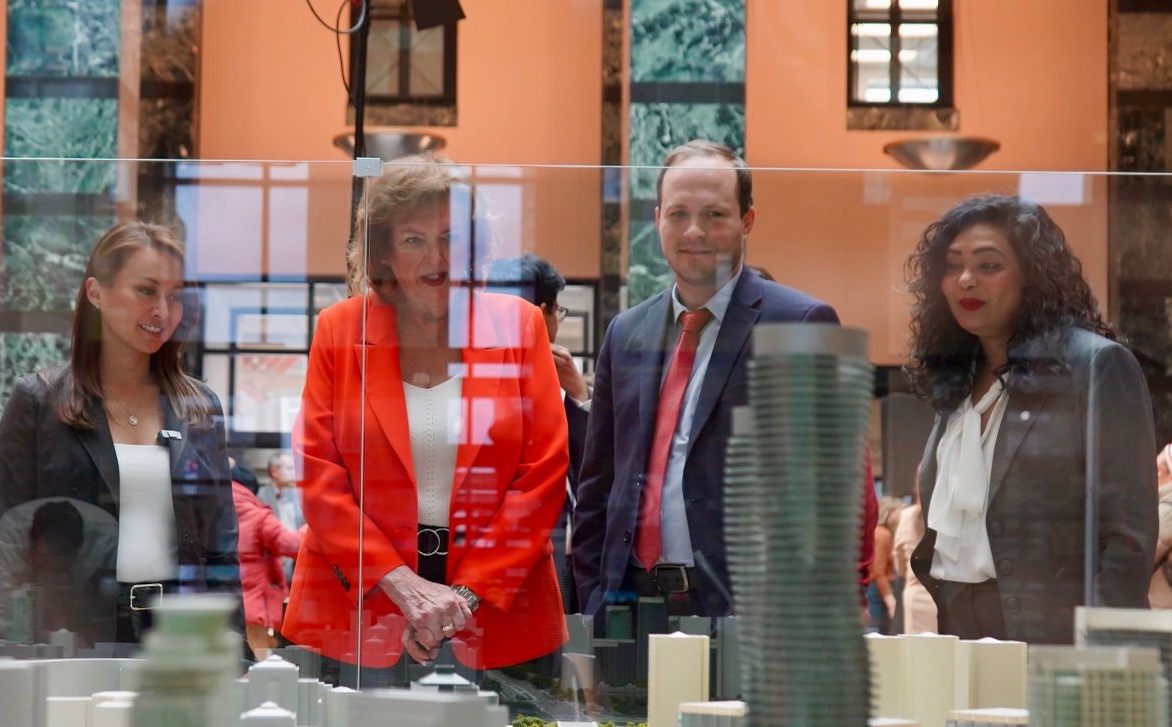
It’s an even more difficult and pressing challenge in the face of the cost pressures and uncertainty that follow from the unconscionable US tariffs.
But we can and should focus on what’s in our control.
i) Red Tape
Let’s start with red tape and restrictive zoning.
We can’t accept outdated rules that protect so-called neighbourhood character at the expense of new neighbours who are looking for an affordable place to call home.
A premier holds the pen to end exclusionary zoning (and I didn’t quite get that far), but we can use our federal spending power to make a difference all the same.
Through the Housing Accelerator Fund we’ve allocated $4.4 billion through deals with more than 200 municipalities to reward housing ambition.
To end restrictive zoning, making gentle density the default without the red tape.
To speed up and modernize approval processes, because time is money.
And to make public land available for more housing supply.
It’s modeled on the Ontario’s Housing Affordability Task Force basic recommendations to increase density, remove exclusionary rules that prevent housing growth, and make sure municipalities are treated as partners in this process by incentivizing success.
Pierre Poilievre once railed against municipal gatekeepers and restrictive zoning. He now wants to cut the single program that’s done the heavy lifting to cut the red tape he used to complain about. He even barred his own MPs from going to bat for change in their home communities.
Anyone who cares about cutting red tape should instead think about doubling down on efforts that reward success and ambition.
Just yesterday, I approved a 10% HAF top-up for the top 7 municipal growth leaders, with $70 million reallocated from cities that walked away from the table.

Last month, I was blamed at City Council here in Toronto for the expedited process on avenues, and I consider that blame a badge of honour.
To be fair to Poilievre, he does have an alternative incentive model. The trouble is that it makes no sense. I’m just going to read from his plan for a second: “cities must increase the number of homes built by 15% each year and then 15% on top of the previous target every single year (it compounds).” If cities miss those targets? “A percentage of their federal funding will be withheld, equivalent to the percentage they missed their target by.”
Why would one want to punish top performers by requiring compound growth every year? Why would one accept a 15% increase from the worst performers?
In my view, the HAF model is a good one at its core and we should look to build upon it in partnership with provinces.
We’re working, for example, to improve transparency in tracking with CMHC publishing summaries of municipal progress.
More than that, we now have the benefit of more than 200 deals to see which municipal changes have driven the most growth and what is working best. Encouraging the adoption of auto permitting makes a lot of sense, for example. Requiring pre-approval of CMHC’s housing design catalogue is another. I’d welcome your own examples and opportunities to improve outcomes through a HAF 2.0.
It isn’t all on one program, of course.
For example, our Canada Public Transit Fund isn’t only the largest investment Canada has ever made in public transit, and it doesn’t only provide stable, predictable, long-term funding for state of good repair, to strengthen and expand existing transit networks. It also requires larger municipalities to enable high-density housing within 800 metres of high-frequency transit lines and post-secondary institutions.
Every infrastructure program we put into place is requiring additional reforms and action.
ii) Taxes
Beyond red tape, taxes can also be a major barrier to new builds. And we need much greater action here too.
At the federal level, we lifted GST entirely on new rental construction and have seen positive results.
The GST new housing rebate was implemented in 1991, it hasn’t been updated or indexed, and it doesn’t account for today’s market in any way. You can expect to hear more on this shortly from our government
NOTE: Prime Minister Carney subsequently announced that the GST would be eliminated on all homes up to $1 million for first-time home buyers. This ensures the benefit doesn’t flow to speculators, which is a good first step and better than Poilievre’s promise. But worth noting that the existing GST new housing rebate is only available for homes purchased as a principal residence, so there’s already a useful guardrail built in, and we should keep the conversation open on how we can best ensure this measure drives supply and applies to help in regions like the GTA and Metro Vancouver.
In last year’s housing plan, we introduced an accelerated capital cost allowance for builders. And a rollover on capital gains that are re-invested in getting housing built would likely have an even stronger policy effect. Everything is currently on the table.
Of course, in many communities, the biggest tax burden on new builds is development charges. Worse, they do not consistently reflect the true costs and needs of delivering infrastructure.
It’s not an easy problem to tackle at the federal level, as it’s not the same challenge across the country. Development charges are a particular problem in Ontario and BC, and even within these provinces it can be apples to oranges between municipalities. Sault Ste Marie doesn’t have development charges. Vancouver and Toronto obviously have sky high DCs.
The Canada Housing Infrastructure Fund aims to address this challenge.
The idea is two-fold: to help provinces and municipalities pay for housing enabling infrastructure and secure commitments to freeze or reduce development charges.
We’ve secured a number of provincial and territorial deals these last few months. In return for funding, the deals require zoning reforms, a three-year development charge freeze, and harmonized building codes and standards.
Where we’re unable to secure a P/T deal, we are moving to finance housing enabling infrastructure with applications directly from municipalities. We will judge applications not only based on the merit of the specific housing enabling infrastructure project as submitted, but also by the ambition of action on DCs.
Sudbury, for example, has implemented a three-year freeze alongside a three-year moratorium on all DCs on multi-unit residential builds.
Other municipalities are deferring the collection of development charges to occupancy and waiving interest and waiving DCs entirely on the first four units of a multi-unit residential build.
Here in Toronto, we’ve been working on a local version of BC Builds, and it wouldn’t be possible to land a deal like that without Toronto’s recent action to reduce DCs and property taxes for rental builders that make 20% of the new units more affordable.
NOTE: we subsequently announced the $2.5 billion deal, making lower-interest and long-term financing available for Toronto priority projects to drive affordable rental housing.
Our overall goal is to establish a set of best practices, as we drive down development charges.
Recognizing the provincial lead here and the need to help municipal finances, we will continue to be a strong partner by directly providing capital funds for housing enabling infrastructure and by expanding what’s included in the scope of eligible work.
But let’s be honest. The infrastructure gap is massive here.
When I met the Quebec builders in Montreal to talk about the $1 billion over 10 years in available funding for a provincial deal, they spoke of a $45 billion water infrastructure gap alone. Some municipalities like Gatineau have a moratorium on new housing because of the lack of water infrastructure.
There’s a significant opportunity here to mandate the Canada Infrastructure Bank to finance housing enabling infrastructure, recognizing that the gap cannot reasonably be closed by deficit-financed contributions or development charges.
Because if we expect growth to pay entirely for growth, we will simply get less growth. And the reality is that everybody benefits from growth.
iii) Innovation
Innovation is critical to growing the housing supply as well, and Prime Minister Carney spoke directly about driving housing innovation in his leadership bid.
That focus is critical when you consider our current productivity challenge in getting homes built. Consider these facts for example:
Productivity in the residential construction sector has dropped by 25% since 2016.
The construction sector is fragmented with only 22 of 38,000 residential construction firms employing more than 200 workers.
The cost to build residential housing increased by 60% since the pandemic, outpacing overall inflation of 15%.
The sector is forecasted to require 300,000 workers by 2032 to replace the 22% of current labour force expected to retire.
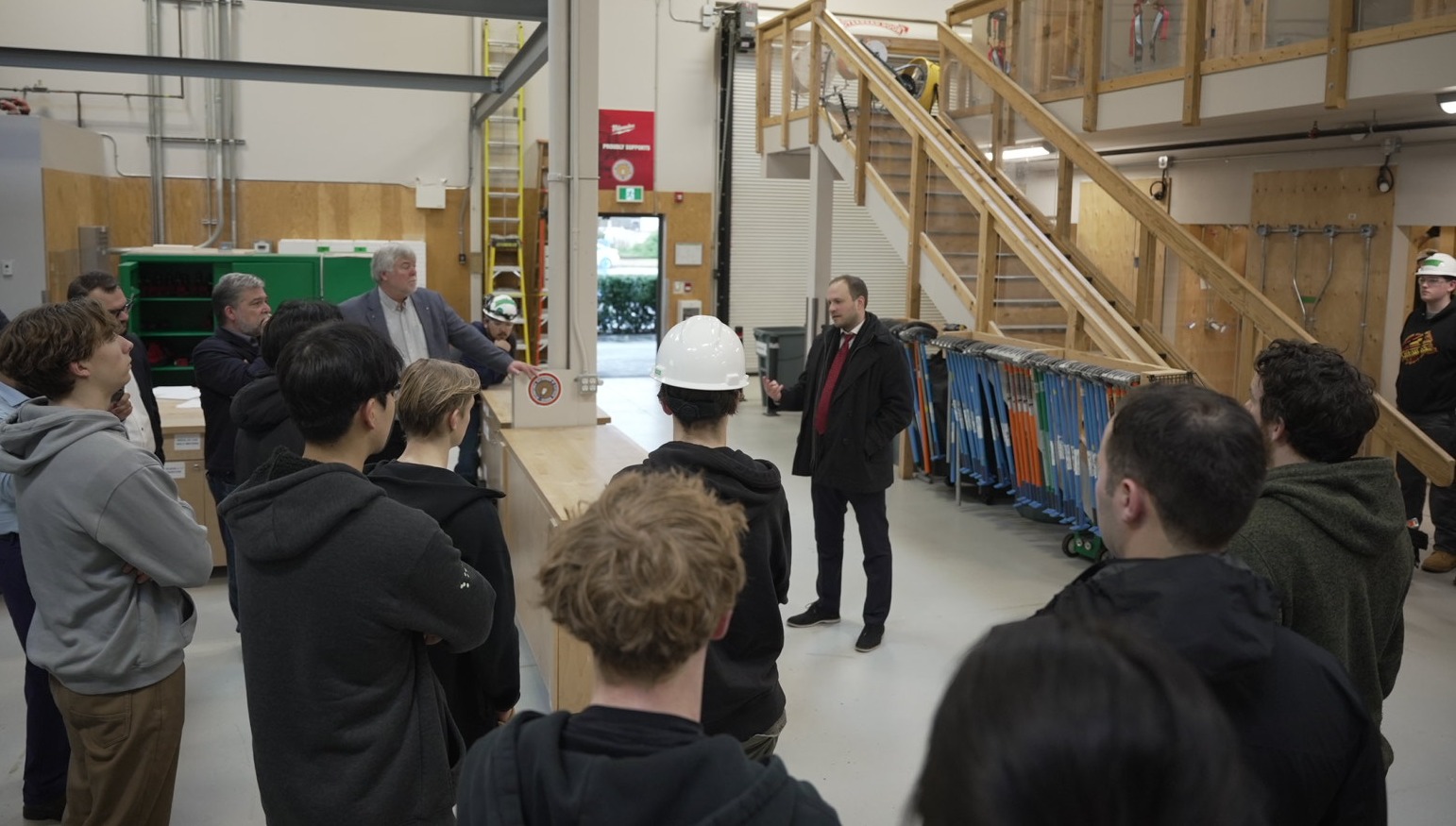
We need to seize the opportunity in off-site construction. We know that factory built homes cut construction time, labour costs, and waste. And mass timber off-site construction in particular represents a unique opportunity for a made in Canada approach, especially in this moment.
The biggest barrier to achieving maximum cost savings from off-site construction like modular is the lack of a sufficiently large production run.
Again, all options are on the table.
I favour an advance bulk purchase of factory-built homes, to guarantee a book of business across different regions, in partnership with municipalities and non-profits that make available serviced public land. Through the Affordable Housing Innovation Fund, we’ve launched a recent call for proposals with $60 million in available capital to finance a few demonstration projects.
Procurement on federal land can drive business here too.
Investment tax credits to help factories scale make good sense.
And we need to work with provinces and territories to support skills training and ensure the labour force is ready for the industrialization of home building.
iv) Financing
In the Prime Minister’s recent leadership bid, he committed to “catalyze enormous private investment to build new affordable homes for younger Canadians by aggressively unlocking private risk capital for new home construction.”
We’ve seen great success with the always oversubscribed Apartment Construction Loan Program, and there’s a huge opportunity to use lower cost financing to help make the math pencil on new projects or existing projects that are otherwise stalled.
Re-investing in social and community housing
Of course, even the herculean effort of doubling housing starts is not enough on its own.
Because we know the market alone won’t deliver the affordability we need – it never has.
In the 1940s, Wartime Housing Limited was created, a crown agency that bought land and contracted the construction of houses, using pre-approved designs, priced for veterans and young families of moderate incomes.
We need that same wartime effort today.
There used to be a cross-party consensus on the need for a forceful government role, especially when it comes to community and social housing.
Consider that in the 1960s, a Progressive Conservative government in Ontario created a public authority that set the conditions for a tenfold increase in the production of social housing.
Watch: TVO’s The Agenda Interview
Fast forward and Mike Harris’ Common Sense Revolution helped kill that consensus. And as we try to bring it back federally, Poilievre’s so-called common sense cuts are around the corner.
When asked, he’s been clear. The government has no role to play in building affordable non-market homes. He describes public housing as Soviet-style housing, actively demeaning the kind of co-op and community housing that those two teachers and their kids depended on.
As long as I’m housing minister, I will continue to emphasize that we need to double the share of social and public housing in this country, a commitment echoed by Prime Minister Mark Carney when running for leadership.
Our current social housing stock is less than 4%. The OECD average level of non-market housing in high-income countries is 7 per cent. France mandates that urban municipalities ensure at least 25 per cent of their housing stock is dedicated to social housing by this year. In Vienna, widely considered to be one of the world’s most livable cities, more than 60 per cent of the population lives in government-subsidized housing.
We have a $1.5 billion acquisition fund that is just in its infancy. I’ve recently changed the authorities within the existing Affordable Housing Fund to enable acquisition as well. And today, I can tell you that the first three projects in our new $1.5 billion co-op housing development fund have been fully financed by CMHC.
The leadership at CMHC is committed to doubling non-market housing, the National Housing Council is committed, and our current government is committed.
We need to expand the pool of public and community lands to be made available for housing, an initiative launched less than a year ago. And we need to match those lands with long-term guaranteed low-interest loans and contributions, with CMHC helping non-market actors scale.
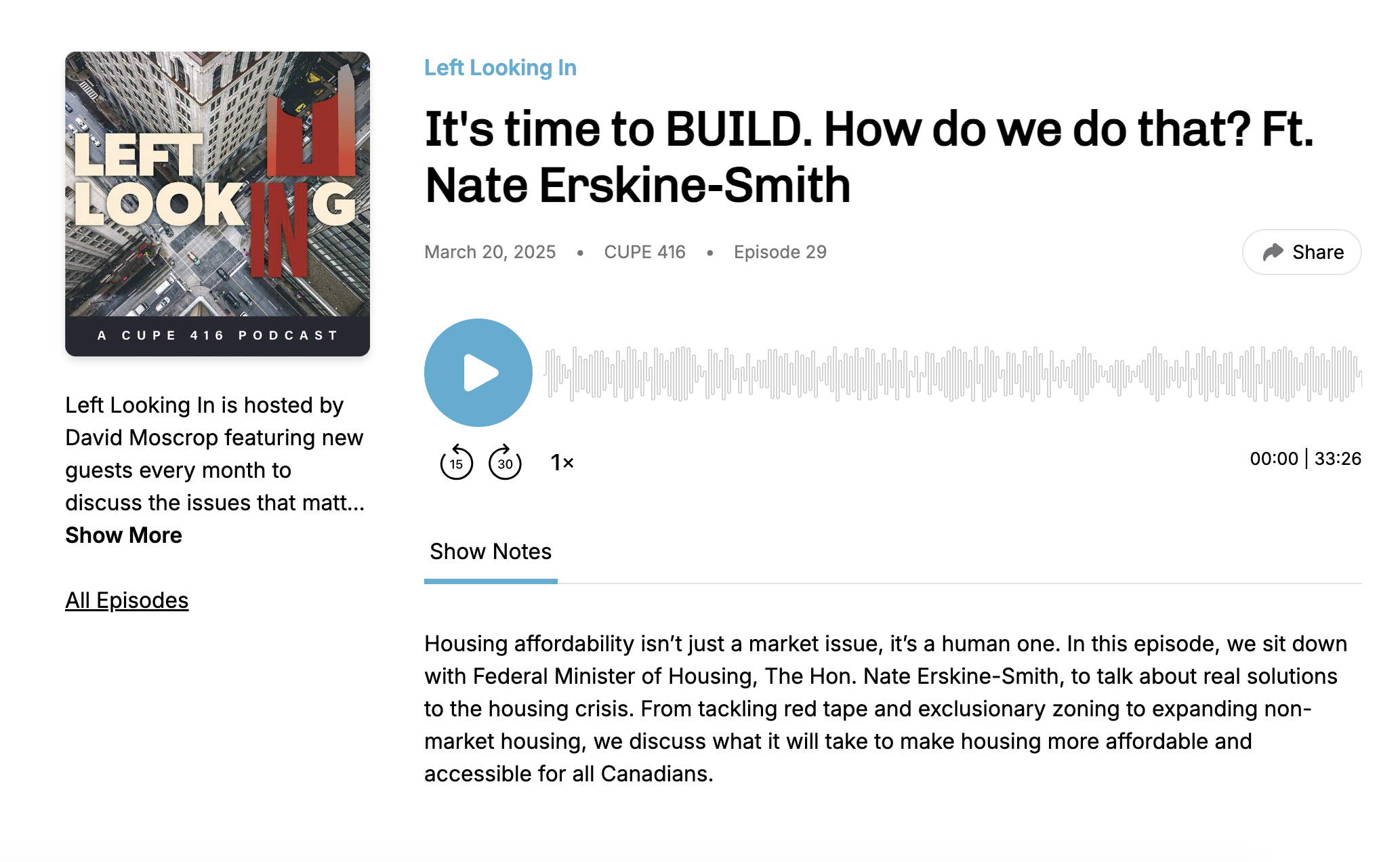
CMHC has a much more proactive role to play here, to move quickly, and to act more like a community housing development bank.
A Canadian version of the Low Income Housing Tax Credit is also worth considering.
73 per cent of Canadians see non-profit and co-op housing as viable solutions to the housing crisis. I’m one of those Canadians, Pierre Poilievre isn’t.
Elections are about choices.
Ending homelessness and addressing encampments
We also have a very different view in how to address encampments and homelessness.
I don’t think it’s helpful to other people. To treat the most vulnerable in our society as an opportunity for a partisan attack.
Anyone who has walked around the parks and main streets of Canadian cities knows we need to do more to address homelessness: both for compassionate and public safety reasons.
The simplest answer is the right one: to prevent homelessness, we need more homes.
We’ve increased homelessness supports – our Reaching Home strategy – by 400% since the pandemic. We’ve delivered $4 billion to get shelters, transitional and supportive housing built through the Rapid Housing Initiative, with another $1 billion being allocated by CMHC.
Watch: Ending Homelessness & Addressing Encampments
As a result of this work, more than 88,000 people have been placed in more stable housing and more than 150,000 have been helped with core prevention services.
We recently topped up funding with $250 million over two years, to be matched by provinces or municipalities where provinces don’t partner with us.
Here in Ontario, we reached deals with 12 municipalities that agreed to cost-match our contributions. Since taking on this role, I’ve been working to reprofile soon to be lapsed funds elsewhere to support communities in Saskatchewan and Ontario to address this immediate need.
Ontario is the only province where responsibility for social housing has been downloaded to municipalities. As a result, we are in a crisis.
I wish it was one we heard more about in this past provincial election, but regardless of how we got here, we need all parties and all levels of government to be part of the solution.
Public spaces – our parks and main streets – should be welcoming to all members of our community, and we can deliver the communities we all deserve while ensuring that we’re treating people – in many cases the most vulnerable in our society – with respect and dignity.
Housing First.
Treating housing as a home first
That idea has a particular meaning in addressing homelessness. When I spoke at the Youth Homelessness Prevention Conference, it’s a term of art.
But it has resonance for me beyond that.
We need to attract massive investment in new building. Of course we do.
But in a competition for existing homes, investment dollars shouldn’t displace affordability.
For example, different jurisdictions here in Canada don’t allow investors to profit from short-term rentals. Other countries, like New Zealand, set higher down payments and more stringent stress tests for investors in the existing resale space.
In the end, we should look at all available rules to prioritize people who are buying houses as a place to call home.
Conclusion
It’s short-term thinking that has contributed to inaction and neglect from all levels of government, creating and eventually deepening the crisis that we’re in.
We’re done with half measures. And we’re treating this issue with the seriousness that is warranted in a crisis.
You’ve heard Prime Minister Mark Carney say that it’s time to build. And it is.
So the choice we have is clear: between Pierre Poilievre, who built next to no homes when he was housing minister, plans to reverse the progress we’ve made on red tape reduction, and doesn’t see a role for the federal government in community housing.
Or serious economic leadership that is ready to build more than we have in decades.
Because our country’s prosperity depends on it. And our individual sense of opportunity depends on it too.
Those two teachers living in that co-op were my parents. And I want that same sense of opportunity for my young kids.


